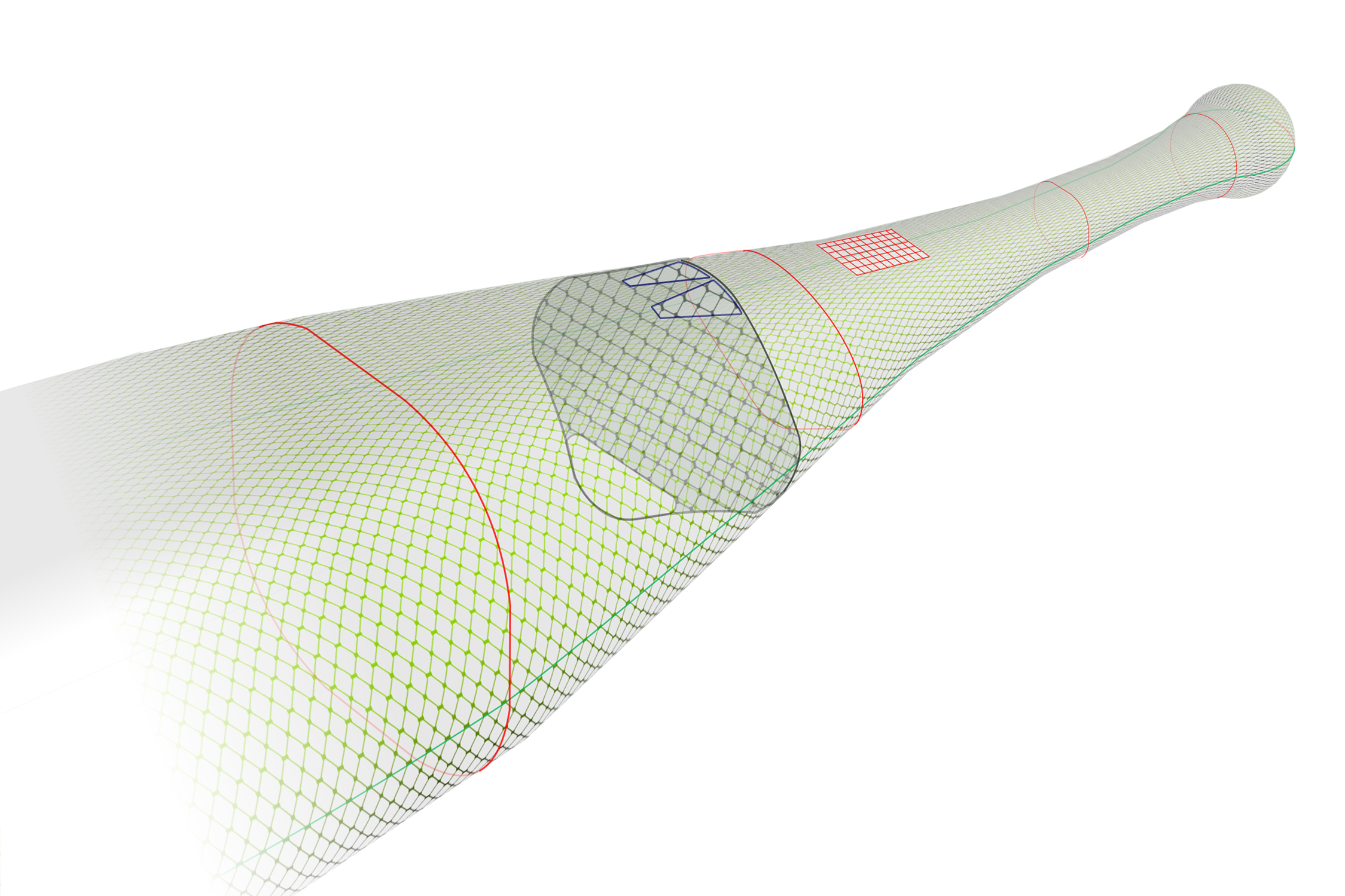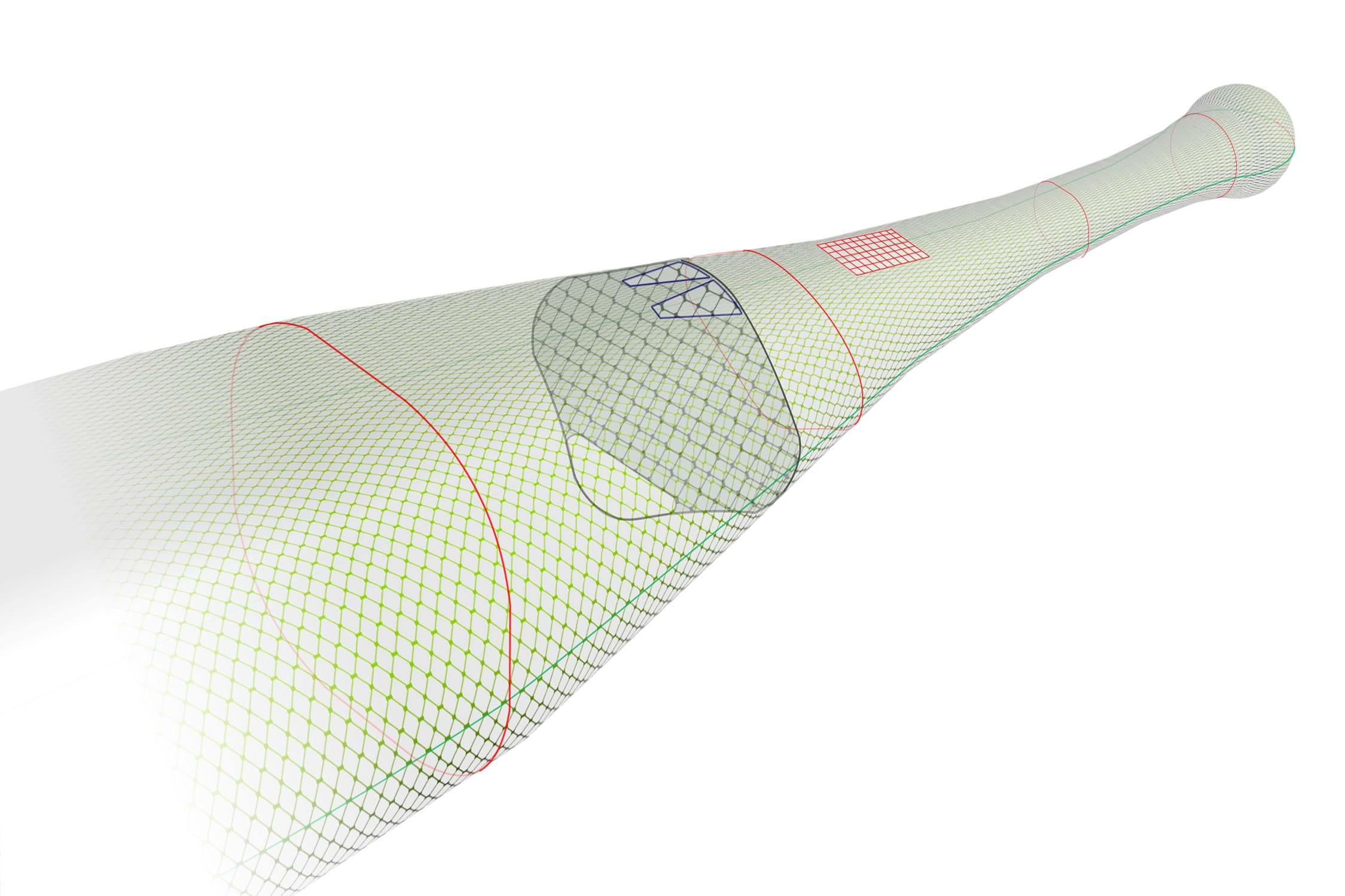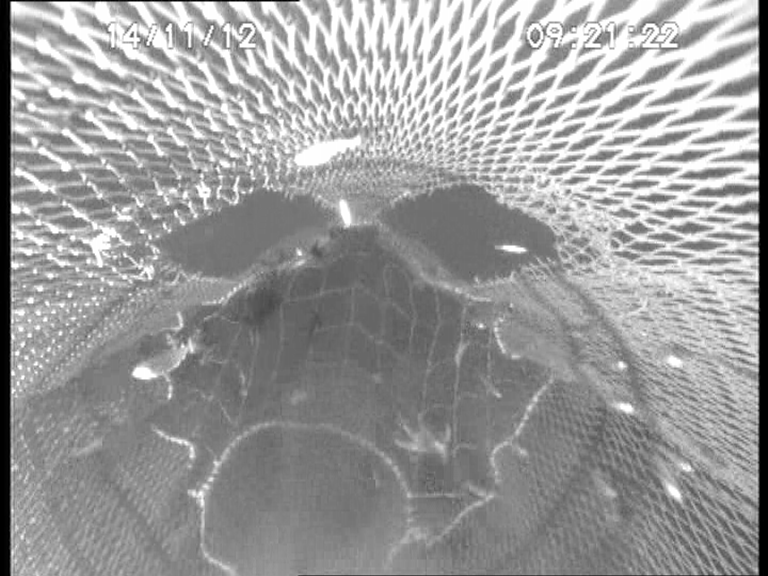F-Cap. (Faithlie Cod Avoidance Panel)
Summary
The F-CAP was developed to release cod from a nephrops trawl. The main part of it is a panel of square mesh fitted into a trawl at an incline about half-way down the tapered section. The square mesh allows nephrops and smaller species to pass through it and into the cod-end while directing much of the larger round fish out through two escape holes in the top of the net.


Size selectivity
This is a simple but effective selective device. It is effective at releasing larger fish such as cod out through the holes in the top of the trawl. Valuable bottom fish can by-pass the inclined panel and pass into the cod end through the flap in the lower half of the inclined panel of square mesh. Nephrops and smaller fish can pass through the square mesh of the grid and into the cod end. many of the smaller fish will escape from the trawl through the square mesh panel further down the trawl.
With the inclined panel of 300mm square mesh at an angle of roughly 30 degrees to the vertical and open squares of 150mm sides there is plenty of access through to the cod-end for all but the largest of fish. However when an F-CAP device is fitted, sea trials have shown that it will release all sizes of round fish, not just the larger ones that cannot pass through the square mesh panel. Reductions as high as 35% for cod, 59% for haddock and 41% for whiting (by Weight) have been recorded. If the escape holes are made bigger these figures can be increased to cod 62%, haddock 74% and whiting 66%.
With the inclined panel of 300mm square mesh at an angle of roughly 30 degrees to the vertical and open squares of 150mm sides there is plenty of access through to the cod-end for all but the largest of fish. However when an F-CAP device is fitted, sea trials have shown that it will release all sizes of round fish, not just the larger ones that cannot pass through the square mesh panel. Reductions as high as 35% for cod, 59% for haddock and 41% for whiting (by Weight) have been recorded. If the escape holes are made bigger these figures can be increased to cod 62%, haddock 74% and whiting 66%.
Other information
With the inclined panel of 300 mm square mesh at an angle of roughly 30 degrees to the vertical and open squares of 150mm sides there is plenty of access through to the cod-end for all but the largest of fish. However when an F-CAP device is fitted, sea trials have shown that it will release all sizes of round fish, not just the larger ones that cannot pass through the square mesh panel. Reductions as high as 35% for cod, 59% for haddock and 41% for whiting (by Weight) have been recorded. If the escape holes are made bigger these figures can be increased to cod 62%, haddock 74% and whiting 66%.
The F-CAP device was developed by Faithlie Trawls in collaboration with several twin rig skippers in NE Scotland. It was tested on several Sea trials by Marine Scotland and showed that it could reduce the capture of code in a nephrops trawl by about 60%.
A section of 300 mm square mesh is fitted into the trawl midway down the body of the trawl. The panel is fitted at an angle with the top being fitted to the top panel of the net 7 meshes behind where the bottom of the panel is attached to the bottom panel of the net. This creates the incline that helps direct larger, higher swimming fish out through the escape holes in the top of the net. The panel itself is cut in an oval shape trying to emulate the cross sectional shape of the trawl at this point. There is a section of square mesh removed from the oval at the bottom to make a ‘ground fish hole’ to allow the valuable monkfish and megrims etc to pass unhindered into the cod-end. Rather than one large escape hole in the top panel of the trawl this device has two smaller triangular shaped holes. This helps to maintain the shape and structure of the trawl. The size and position of these escape holes is usually dictated by legislation. This device was developed with the aim of removing some of the large cod from the trawl to meet the requirements at the time of cutting cod catches to below 1.5% by weight.
